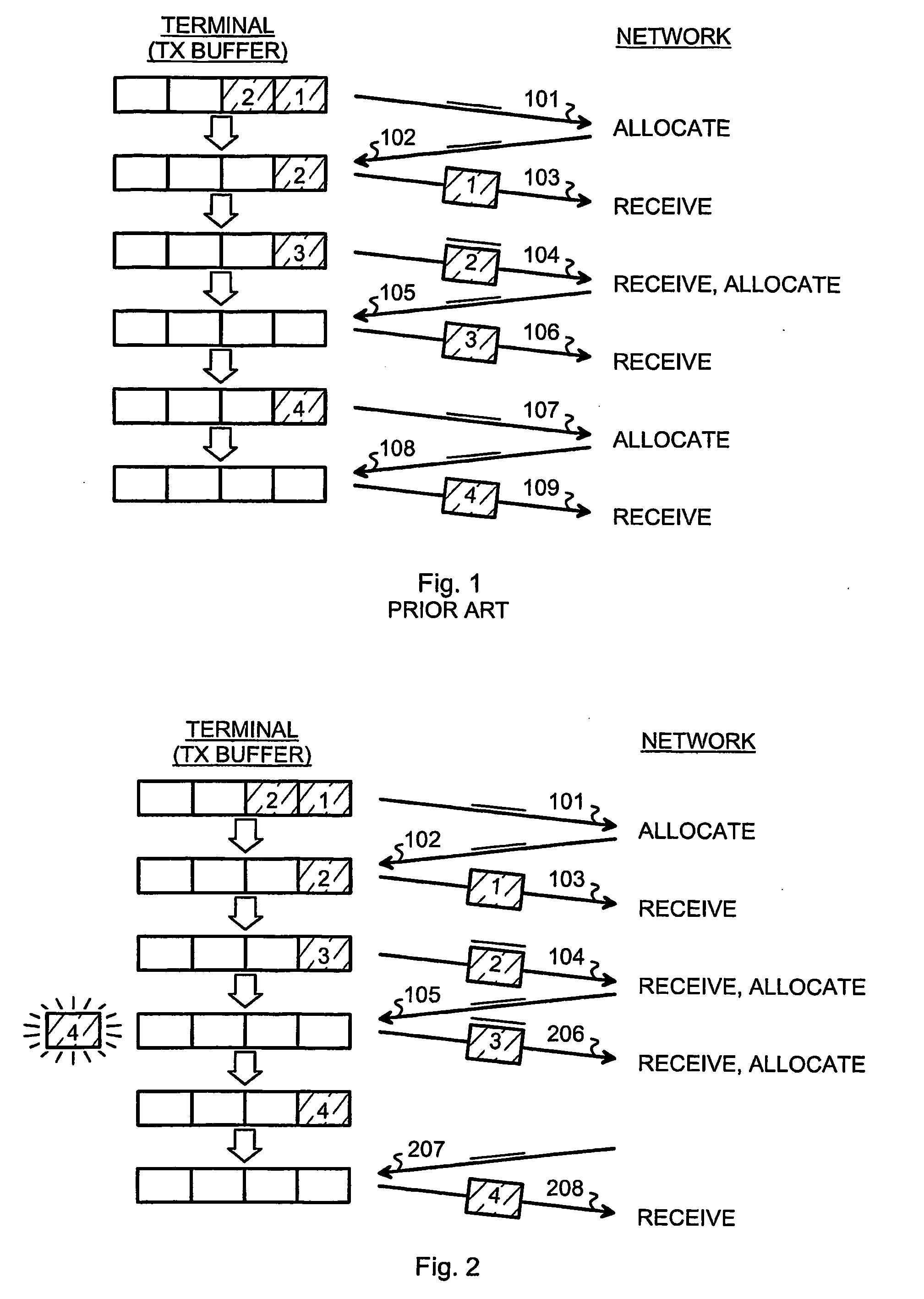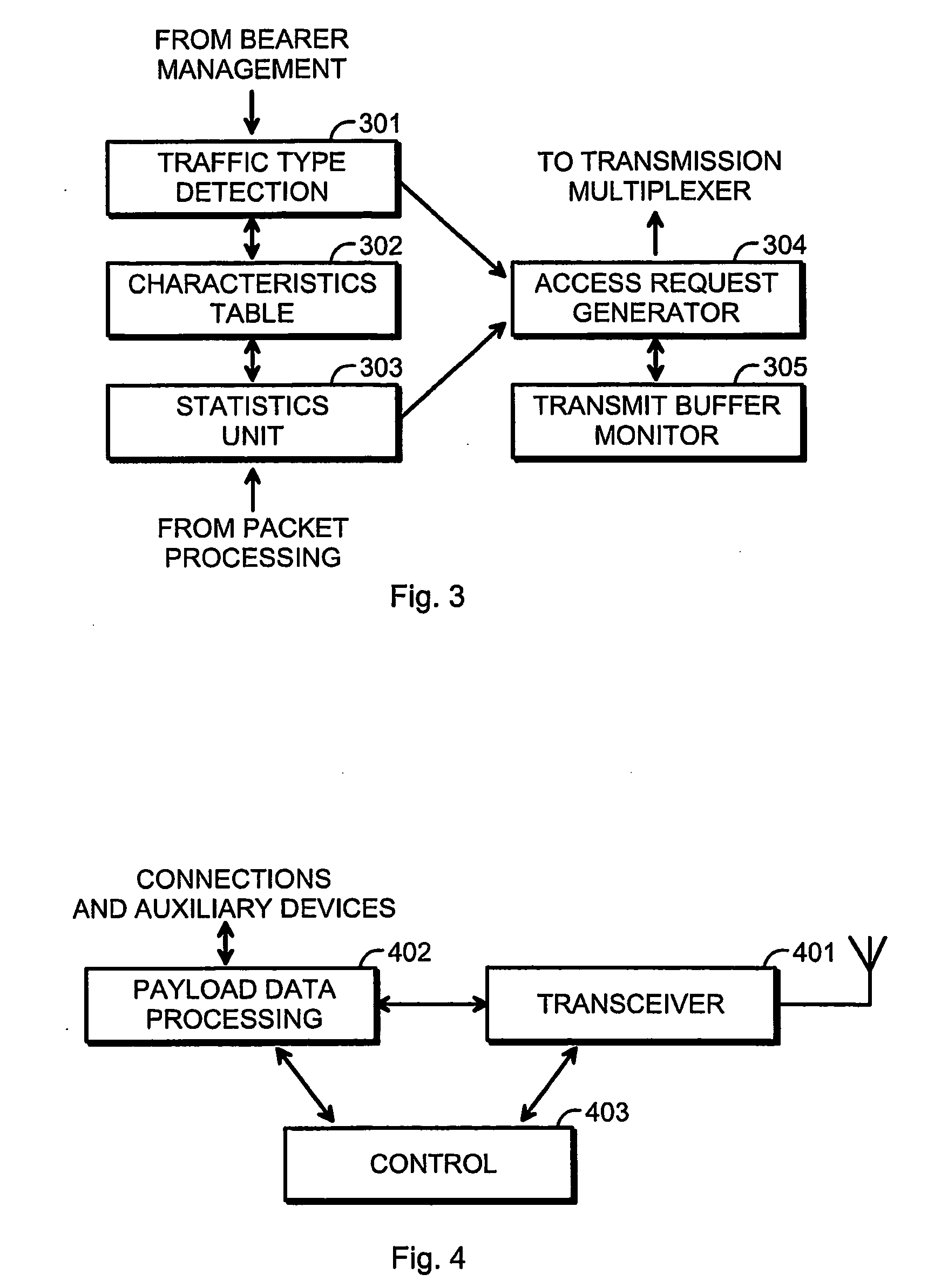Name service in a multihop wireless ad hoc network
a name service and wireless ad hoc technology, applied in the direction of network topologies, digital transmission, connection management, etc., can solve the problems of occupying the transmission buffer, affecting the effect of transmission resources, and involving a large overhead in short control messages
- Summary
- Abstract
- Description
- Claims
- Application Information
AI Technical Summary
Benefits of technology
Problems solved by technology
Method used
Image
Examples
Embodiment Construction
[0027]The procedure illustrated in FIG. 2 begins similarly as the corresponding procedure in FIG. 1: at stage 101 the terminal arrangement requests resources for transmitting two packets; at stage 102 the network grants the requested resources; at stage 103 the terminal arrangement transmits the first packet; at stage 104 the terminal arrangement transmits the second packet as well as a piggy-backed request for resources needed to transmit the third packet that appeared in the transmission buffer in the meantime; and at stage 105 the network grants the requested resources. However, even if at the moment of transmitting the third packet there are no further packets in the transmission buffer, the terminal arrangement is capable of predicting that a fourth packet will appear soon. Therefore at stage 206 the terminal arrangement transmits, piggy-backed on the transmission of the third packet, a request for resources needed to transmit the fourth packet. This request may have a slightly...
PUM
 Login to View More
Login to View More Abstract
Description
Claims
Application Information
 Login to View More
Login to View More - R&D
- Intellectual Property
- Life Sciences
- Materials
- Tech Scout
- Unparalleled Data Quality
- Higher Quality Content
- 60% Fewer Hallucinations
Browse by: Latest US Patents, China's latest patents, Technical Efficacy Thesaurus, Application Domain, Technology Topic, Popular Technical Reports.
© 2025 PatSnap. All rights reserved.Legal|Privacy policy|Modern Slavery Act Transparency Statement|Sitemap|About US| Contact US: help@patsnap.com



